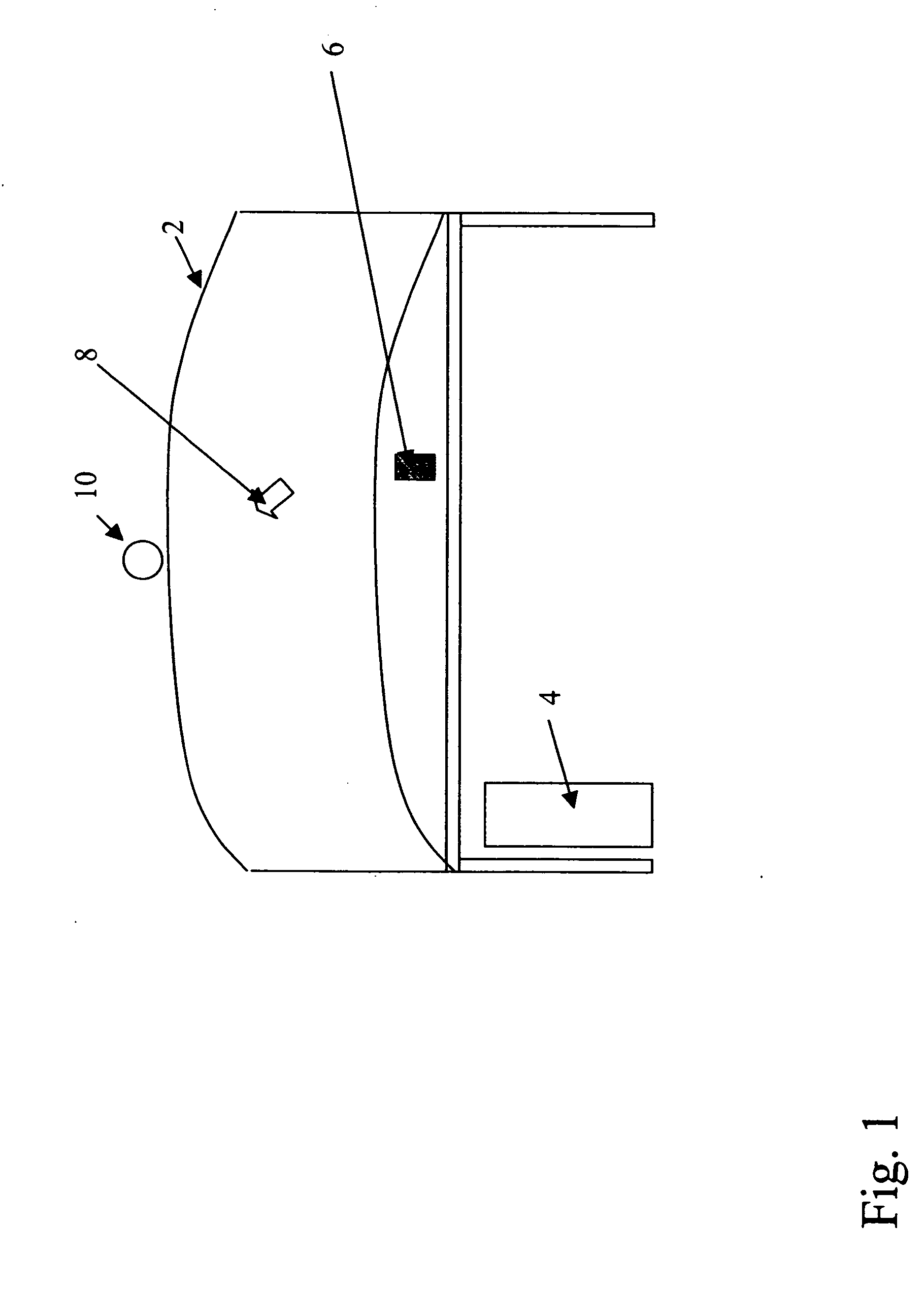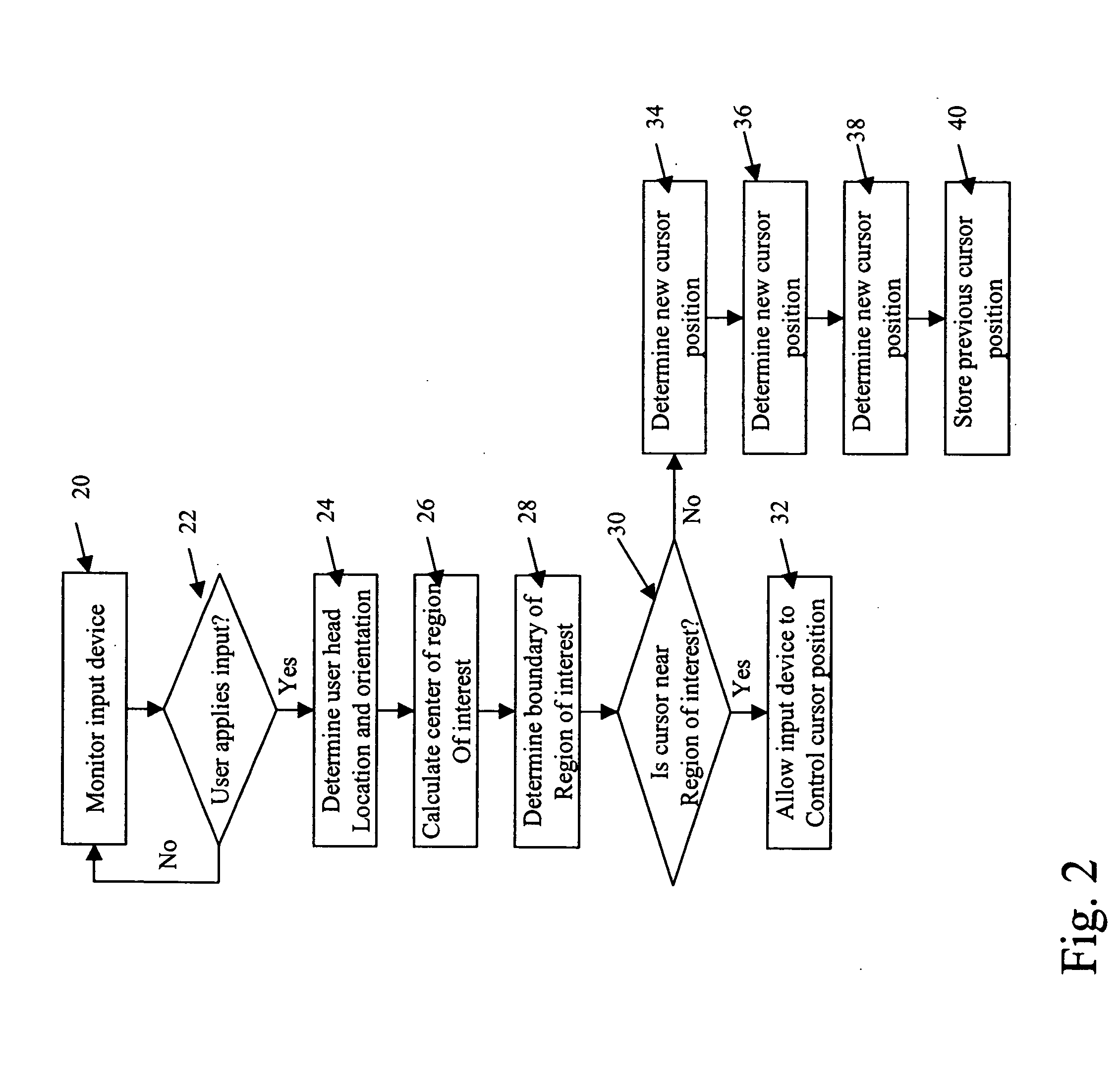Pointing device for large field of view displays
a display and large field of view technology, applied in computing, instruments, electric digital data processing, etc., can solve the problems of user making multiple mouse or other input device movements to move the cursor from one area of the display to another area of the display, and it is difficult to establish a single control-display ratio, etc., to achieve the effect of improving the positioning of the cursor
- Summary
- Abstract
- Description
- Claims
- Application Information
AI Technical Summary
Benefits of technology
Problems solved by technology
Method used
Image
Examples
Embodiment Construction
[0015] This invention takes advantage of the fact that a human operator generally moves his or her head in concert with eye movements whenever significant shifts in attention occur in order to provide improved cursor positioning. As described by A. R. Tilley in the book entitled “The Measure of Man and Women” published by Henry Dreyfuss Associates, New York, 1993, users generally find eye rotation to plus or minus 15 degrees off center to be easy. The user will make larger eye movements, however, head movements will typically accompany these eye movements. Eye movements beyond plus or minus 35 degrees can not be made, requiring that the user rotate his or her head to gather visual information. It is generally more comfortable for a user to maintain their eyes pointed straight ahead than to look to the side. For this reason, the user may make head movements even when eye movements of 15 degrees or less are required.
[0016] The fact that eye movements, especially those beyond plus or ...
PUM
 Login to View More
Login to View More Abstract
Description
Claims
Application Information
 Login to View More
Login to View More - R&D
- Intellectual Property
- Life Sciences
- Materials
- Tech Scout
- Unparalleled Data Quality
- Higher Quality Content
- 60% Fewer Hallucinations
Browse by: Latest US Patents, China's latest patents, Technical Efficacy Thesaurus, Application Domain, Technology Topic, Popular Technical Reports.
© 2025 PatSnap. All rights reserved.Legal|Privacy policy|Modern Slavery Act Transparency Statement|Sitemap|About US| Contact US: help@patsnap.com



